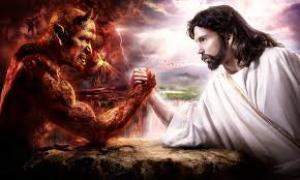How This Critter Crits : Good, Evil and Warts by Jay Squires |

NOTE: THE POST BELOW APPEARED IN MARCH OF 2013 ON MY BLOG, JaySquires' SeptuagenarianJourney. ENJOY!
GOOD, EVIL & WARTS As writers, we're all cast in the role of director with each story we write. Tuck that in the back of your mind. Or not—since it's pretty obvious. I'll get back to it momentarily. Anyway, either Natalie Morales or Savannah Guthrie—one of the two I always get mixed up because they look like they could be sisters—was interviewing Justin Bateman. Now, in this movie he played a school teacher who was coaching a group of kids for a spelling bee competition. The character was apparently pretty hard on them because one of the questions Natalie or Savannah asked him was, Your character was pretty mean, wasn't he?" "Well," said Justin, "I don't know that I would call him mean." And what followed is the theme of this post: By the way, I don't even remember what words he used to justify the behavior of his character—mainly because I was getting ready to go to the gym (which at my age isn't a vanity but an essential) and I can't say I was paying a lot of attention. Anyway, the words themselves didn't matter. It was during a stint on the treadmill, though, that the thematic worm began to burrow into my noggin. It came up for air a couple of times during crunches and again during curls. Knowing the worm'll find no nutrients in that gray sponge to help turn it into a butterfly, I'm going to yank it out now and take a good look at it. And here goes: As I said, whatever words Justin used to justify his character's behavior aren't important. What is important is that something urged him to defend his character with, "You know, Natalie or Savannah, I can't really agree he was mean." And he proceeded to go into the back story of the character, the stuff that probably didn't make it into the film, but nevertheless made the character what he was. It wasn't, but it could easily have been: His dad always told him he was stupid. And his mom, who wouldn't dream of contradicting her husband, suggested he might want to consider driving a bus for the city instead of going to college. Or it could have been this: after the first kiss he ever planted on the first date he'd ever had, the recipient and the love of his life announced: "Ewwww, you slobbered!" Whatever! Some-such-thing caused him to feel the need to live through his students, and by Jingo, they weren't going to fail him now! I remember Jay Leno (and I'm sure of that—no one looks like Jay Leno) asking Anthony Hopkins about his role of Hannibal Lecter in Silence of the Lambs. Leno's question was more like "how could you get into the role of such a vicious character?" Again, I'm afraid I don't remember Hopkins' exact words, but it did involve his automatic-search-mechanism for a redeeming quality in the character. One is not born with a fanatical craving for fresh-cut, raw flesh. One is the product of one's past. And the bottom line: the character of Hannibal Lecter was not pure evil. Serendipitously, for this blog post, on Tuesday, one of the Today Show twins interviewed Kyle MacLauchlan, who is the antagonist in the new series, Believe. Again, she asked the inevitable question. This time I scrambled for a pen and wrote down his response: "I wouldn't say he was evil—just misunderstood," he said with an ironic smile. "He wants to do something positive for the world, but he just has it a little backward." I don't think I'm far afield in suggesting that most of you can come up with similar interviews you've listened to of actors and their roles. An actor, to be convincing in his role, must become, as closely as possible, the character he portrays. But to do that, there has to be a human element in the character—a redeeming trait. In the first paragraph I asked you to tuck something away in the back of your mind that I'd get back to later. If you'll kindly pluck it out now …. I said, "As writers, we're all cast in the role of director with each story we write." Now when Natalie or Savannah asked Jason Bateman how hard it was to be both actor and director in the movie, he said something he and I, both, thought was kind of clever—which was that as the director he had one less actor to worry about. On the level of humor (and in the interest of being charming in the interview), I knew what he meant and it gave me a chuckle. As a director, though, he does have to worry about each and every character in his film, including his own. He must be willing to dig as deeply into each character as he needs to in order to find his or her individual humanity. As writers we must do the same. Secularly speaking, there is no person, real or invented, who is pure evil. If he were pure evil and real, he would be dead, because no one including himself can exist as pure evil. If he were invented as purely evil, he could not exist because he would not be believable—to the reader and to himself, as the writer. Again, secularly speaking, flip the concept: there is no person, real or invented, who is pure good. In both the real and the invented version pure good cannot exist because it is the pinnacle of a standard that is impossible to live up to. In other words he or she would be unbelievable. As writers we must hold each character up to the scrutiny of the rule-of-not-quite: It was probably thirty years ago, while thumbing through an issue of Writer's Digest, when I came across an article on character development. The title of it was something to the effect of Give Your Characters warts. I was at the time an insurance salesman and (because of the bad rap salesmen were given) our company's credo was authenticity. Be believable to our prospects. We needed to convey the warm and fuzzy feeling of "here I am, folks, warts and all." If we could fit it into our presentation we were encouraged to actually use those words. As salesmen, we needed to be authentic to be believed and trusted. As writers, our characters need to be authentic to be believed. Both need their warts to show. But I want to take it a step further: At the point we writers are creating our characters we need to make sure the good guy is not too pristine (in order to be authentic), and the bad guy is not too evil (for the same reason.) It may be as simple as adding warts in the first instance, and slathering ample applications of Compound W in the second.
|
| ©
Copyright 2024.
Jay Squires
All rights reserved. Jay Squires has granted FanStory.com, its affiliates and its syndicates non-exclusive rights to display this work. |




